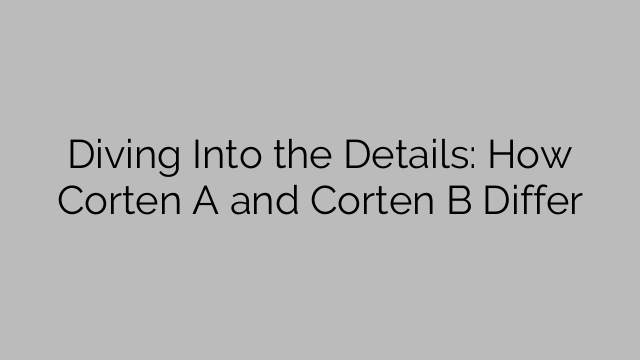Corten steel is available in two different grades, Corten A and Corten B, each with its own set of features and benefits. Understanding the differences between these two grades can help in making the right choice for a specific project.
Corten A is primarily made up of iron with small amounts of copper, phosphorus, silicon, and other elements. It is also referred to as ASTM A242, which is the specification for high-strength low-alloy structural steel with improved atmospheric corrosion resistance. Corten A offers excellent tensile strength and is highly resistant to corrosion, making it ideal for outdoor structures exposed to harsh weather conditions.
On the other hand, Corten B is made up of iron, chromium, copper, nickel, and other elements. It is often referred to as ASTM A588, another specification for high-strength low-alloy structural steel with improved atmospheric corrosion resistance. Corten B offers similar properties to Corten A but with increased resistance to atmospheric corrosion due to the addition of chromium. This makes Corten B suitable for applications where higher corrosion resistance is required.
One crucial difference between Corten A and Corten B is the amount of phosphorus present in each grade. Corten B has a slightly higher phosphorus content, which contributes to its increased resistance against atmospheric corrosion. This higher phosphorus content also makes Corten B more suitable for welding applications, as it reduces the risk of cold cracking during the welding process.
When it comes to appearance, Corten A and Corten B may have slight differences due to variations in their chemical compositions. Corten A tends to develop a rust-like appearance relatively quickly when exposed to the elements, adding to its unique and rugged aesthetic. On the other hand, Corten B may take a bit longer to develop the characteristic rust-colored patina but offers a similar appearance in the long run.
Both Corten A and Corten B offer exceptional strength and durability, making them suitable for a wide range of applications. These include outdoor sculptures, architectural features, bridges, facades, and structural components exposed to harsh atmospheric conditions. The use of Corten steel adds a distinct and eye-catching element to any design while contributing to its longevity and protection against corrosion.
In conclusion, while Corten A and Corten B share many similarities, the addition of chromium in Corten B provides increased resistance to atmospheric corrosion. The slightly higher phosphorus content in Corten B also enhances its suitability for welding applications. When choosing between the two grades, it is essential to consider the specific requirements and environmental factors to determine the most suitable option. Whether it is Corten A or Corten B, both grades of weathering steel are sure to deliver outstanding performance and an aesthetically pleasing appearance.
[ad_2]

